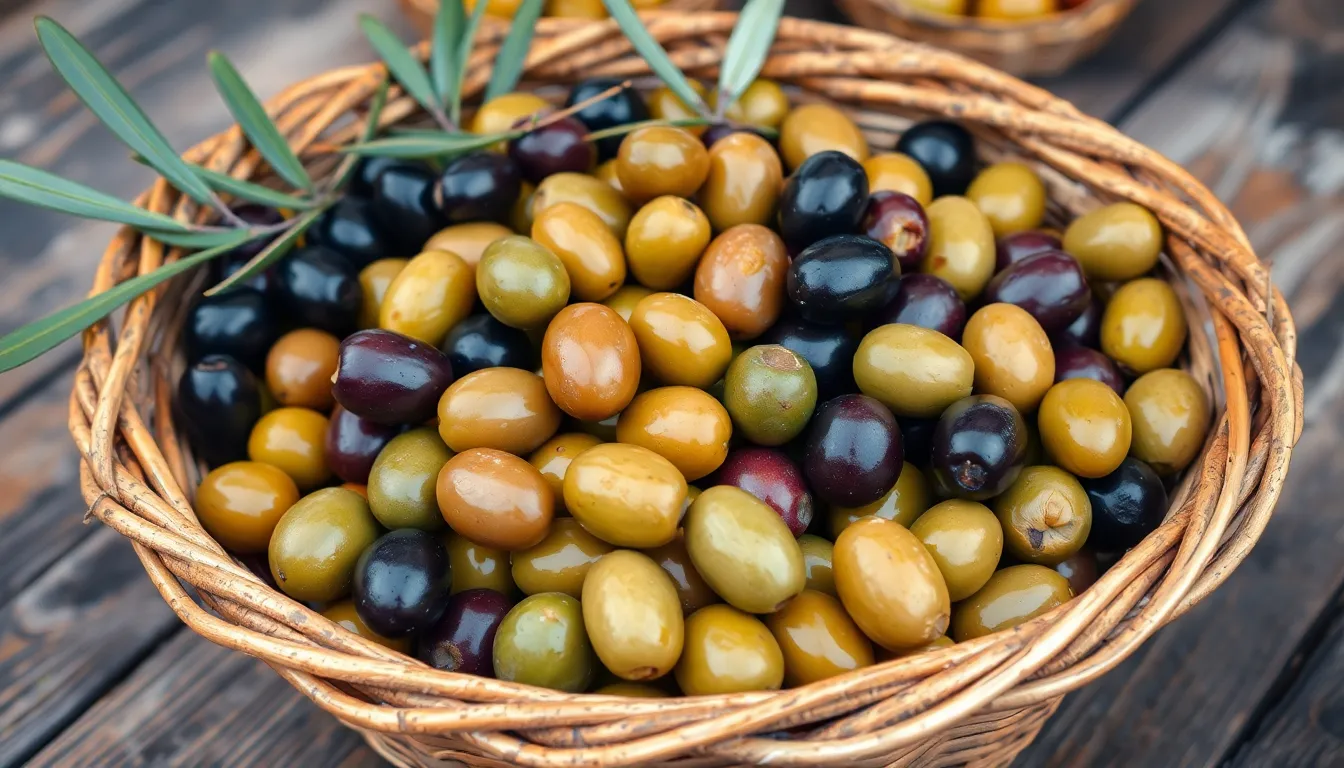Table of Contents
ToggleImagine drizzling fresh, homemade olive oil over your favorite dish. It’s not just a culinary dream; it’s a reality that’s easier than you think. With a little know-how and a few simple steps, anyone can transform those humble olives into liquid gold right in their kitchen.
Understanding Olive Oil Production
Homemade olive oil offers unique flavors and health benefits. Making it at home can be rewarding and allows control over ingredients.
The Benefits of Homemade Olive Oil
Freshness enhances flavor and nutritional value. Homemade olive oil often contains higher levels of antioxidants compared to store-bought options. Customization enables the incorporation of preferred ingredients, such as herbs or spices, creating distinctive blends. Control over the sourcing of olives ensures quality and organic options. Cost savings accumulate over time, especially for avid users of olive oil. Additionally, this process promotes sustainability, minimizing packaging waste and carbon footprint.
The History of Olive Oil
Olive oil boasts a rich history dating back thousands of years. Ancient civilizations, such as the Greeks and Romans, prized olive oil for culinary and medicinal purposes. Historical texts, like those by Homer, reference olive oil as a staple in daily life. Throughout its history, olive oil spread across Mediterranean regions, becoming essential in various cuisines. Trade routes expanded its reach, linking oil production to cultural exchanges. Today, olive oil retains its significance, celebrated for both its culinary use and role in health practices.
Choosing the Right Olives

Selecting the right olives is essential for producing high-quality olive oil. Different olive varieties contribute unique flavors and characteristics to the oil.
Types of Olives for Oil Production
Arbequina olives create a smooth, fruity oil with nutty undertones. Koroneiki olives yield robust oil, known for its peppery finish. Manzanilla olives produce a mild flavor, perfect for lighter dishes. Frantoio olives combine fruitiness with herbal notes, offering complexity. Choosing a variety influences the taste profile, allowing for customization based on preference.
Where to Source Fresh Olives
Local farmers’ markets often provide fresh olives directly from growers. Olive orchards and specialty stores stock a variety of olives, ensuring quality freshness. Online retailers also offer olives, providing convenient access year-round. Community-supported agriculture (CSA) programs sometimes include fresh olives, supporting local farmers while sourcing quality produce. Proper sourcing ensures optimal flavor and quality for homemade olive oil production.
Tools and Equipment Needed
Making olive oil at home requires a few essential tools and optional equipment for efficiency.
Essential Equipment for Olive Oil Making
A quality olive mill or food processor stands out as the primary piece of equipment for extracting oil. A large bowl collects the crushed olives, catching pulp and liquid during the process. An oil press, while more advanced, can significantly enhance oil yield. A fine mesh strainer separates the oil from the pulp, ensuring a smooth final product. Glass containers store the olive oil, protecting it from light and air for preservation.
Optional Tools for Efficiency
A food scale assists in measuring the amount of olives, ensuring consistency in production. An immersion blender can quickly puree olives, speeding up the extraction process. Cheesecloth simplifies the straining process, providing a finer filtration option. A thermometer monitors temperature to optimize extraction conditions during pressing. Lastly, a ladle helps in transferring oil without spillage, enhancing convenience and cleanliness.
Step-by-Step Guide on How to Make Olive Oil at Home
Making olive oil at home involves several straightforward steps that yield delicious results. The process begins with harvesting and preparing the olives.
Harvesting and Preparing Olives
To start, select ripe olives. Look for plump, firm olives that display vibrant colors. After harvesting, rinse the olives thoroughly to remove dirt or debris. Inspect them carefully, setting aside any damaged or rotten olives. Preparing olives enhances their flavor, so check each one before proceeding. After washing, you can either use them immediately or store them in a cool, dark place for a few days to develop flavor complexity.
Crushing and Grinding the Olives
After preparing the olives, it’s time to crush and grind them. Use an olive mill or a high-quality food processor for effective results. Begin by placing the olives in the mill or processor, ensuring not to overload it. Grind until a paste forms, which generally takes a few minutes. It’s crucial to break down the flesh and pit, allowing the oil to be easily extracted. Avoid overheating the paste, as high temperatures can compromise the flavor.
Extracting the Oil
Once the olive paste is ready, extraction follows. Transfer the paste into a fine mesh strainer or cheesecloth set over a large bowl. Gather the edges of the cloth and squeeze to separate the oil from the pulp. Allow gravity to aid in the extraction by letting it sit for about 30 minutes if possible. Ensure to collect as much oil as possible, then discard the leftover pulp. Refrigerate the freshly extracted oil in an airtight container to maintain flavor and freshness.
Storing Your Homemade Olive Oil
Proper storage maintains the quality of homemade olive oil. By implementing best practices, it’s possible to preserve flavor and freshness.
Best Practices for Storage
Store olive oil in a dark glass or stainless steel container. These materials protect oil from light exposure, which causes oxidation. Keep containers tightly sealed, as air can degrade quality. Place them in a cool, dark area, away from heat sources like stoves and sunlight. Optimal temperature ranges between 55°F and 70°F. Monitor the oil for any signs of cloudiness or sediment, indicating potential spoilage.
How to Know Your Oil is Fresh
Assessing freshness relies on various indicators. Fresh olive oil possesses a vibrant green color, signaling high chlorophyll content. A fruity aroma usually accompanies it, often reminiscent of fresh olives. Taste offers another clue; quality oil has a peppery, slightly bitter flavor profile. If the oil feels flat or has an off-putting scent, it may indicate rancidity. Check the harvest date on the label for reassurance; oil typically remains fresh for 12 to 24 months after pressing.
Making olive oil at home is not just a rewarding culinary adventure but also a way to connect with traditions that span centuries. The process allows for creativity in flavor and customization that store-bought options often lack. With the right tools and a bit of patience anyone can enjoy the rich taste and health benefits of freshly pressed olive oil.
By sourcing quality olives and following the outlined steps for extraction and storage, homemade olive oil can elevate meals while providing a sustainable alternative to commercial products. Embracing this practice not only enhances culinary experiences but also fosters a deeper appreciation for the art of oil making. So why not take the plunge and start crafting your own unique blend today?




